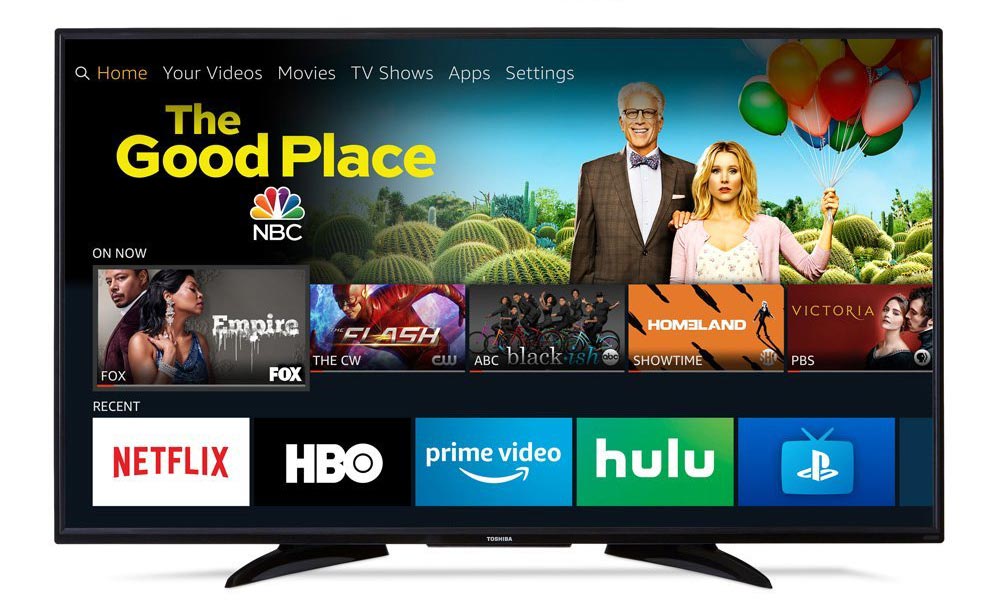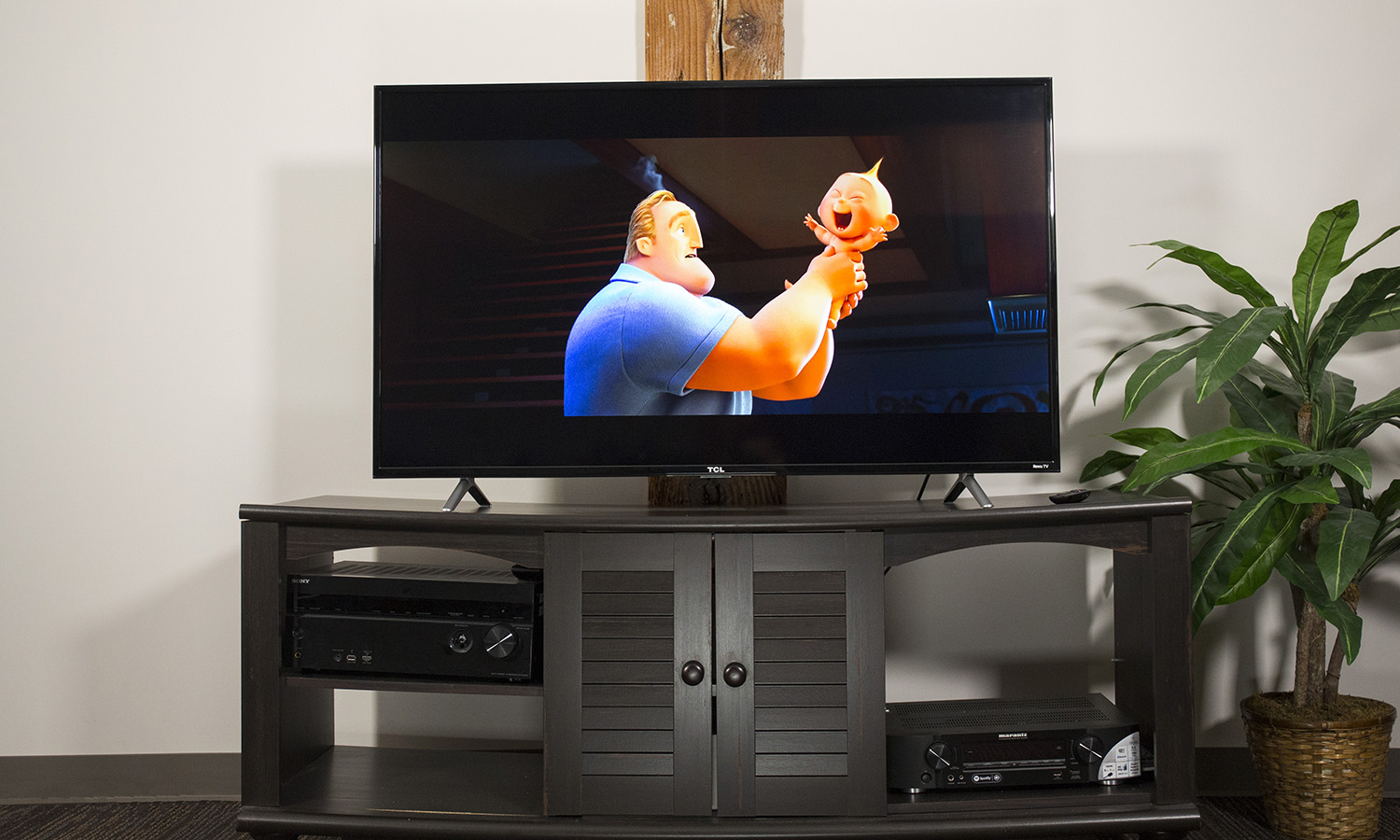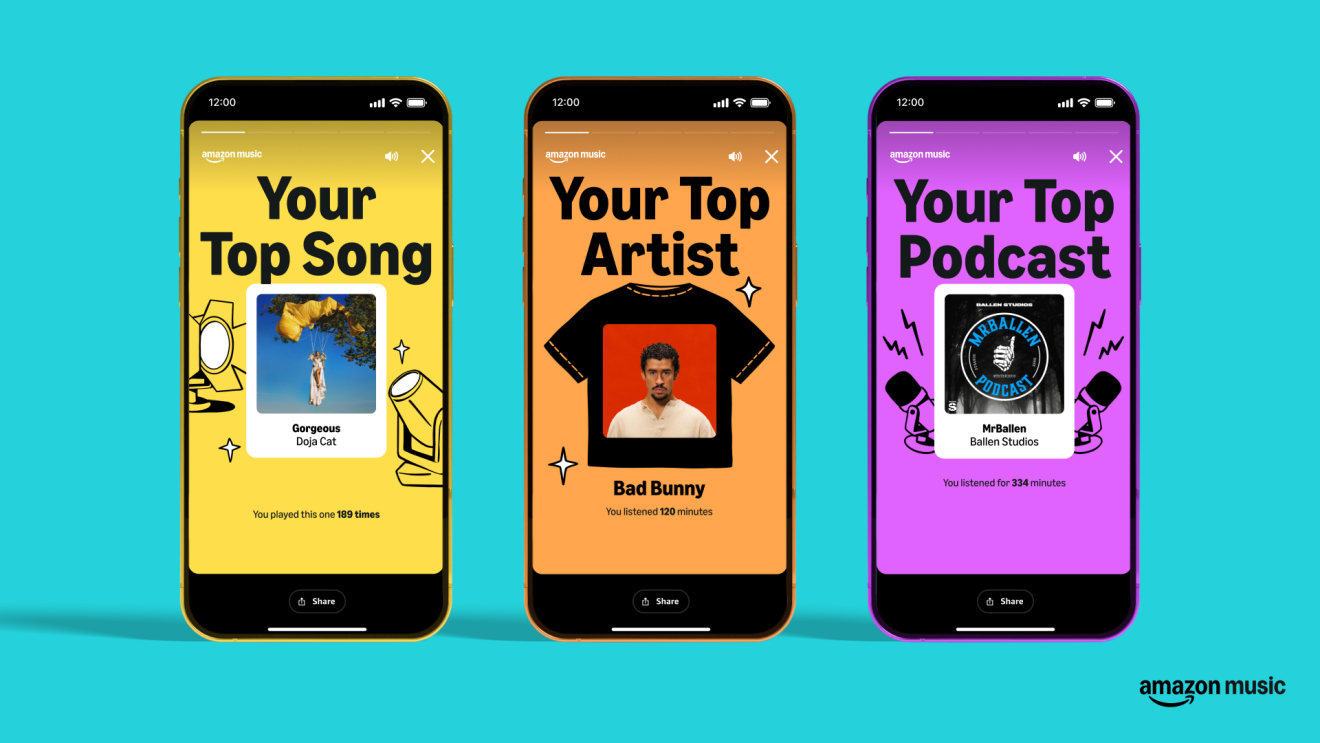Amazon's Smart TVs Are Terrible, and It's Time for an Intervention
Amazon's smart TV offerings have been around for two years, but a glaring problem remains — lousy hardware.

Let's talk about Amazon-powered smart TVs. Starting with the Westinghouse Amazon Fire TV Edition last year, and Toshiba and Insignia models in 2018, Amazon's Fire TV smart-TV OS has been showing up on a few – very few – select TVs.
The confusing name aside, Amazon's smart TVs have sold well – on Prime Day, Amazon claimed that discounted Toshiba models were the "best-selling TV deals in Amazon history" – boosted by a combination of low prices, high visibility in Amazon's store and sales and some well-earned customer loyalty to the Fire TV operating system, the same one found in Amazon's original Fire TV streaming sticks.
But the few Amazon TVs that have been released also have something else in common: They're remarkable in their mediocrity.
Editors' Note: (Updated April 18, 2019) Amazon and Google have ended their feud, and official YouTube apps are coming to Amazon Fire TVs, fixing one of our biggest problems with the Amazon-powered smart TV.
Amazon's Fire TV OS Is A-OK (Mostly)
Competition is definitely welcome in the smart-TV space, and Amazon has managed to make a product that could offer a strong alternative to proprietary OSes and generic platforms like Android TV and the growing behemoth that is Roku TV.

Amazon's interface is fairly well-polished, with rows of apps, recommended shows and movies, and several popular apps like Netflix, HBO Go and PlayStation Vue in addition to the expected Amazon Prime Video. Navigation is simple and intuitive, thanks to the ring-shaped directional controls on the remote, and voice control is top-notch. The selection in the Amazon app store is extensive, benefiting from Amazon's history with Android-derived tablets and other TV streaming devices.
Get instant access to breaking news, the hottest reviews, great deals and helpful tips.
The biggest benefit of Amazon's smart ecosystem is the inclusion of Alexa, the company's industry-leading voice assistant. It comes baked into the Fire TV Edition TVs, letting you use the remote control's built-in microphone for all of the capabilities Alexa offers, from simple content search to hundreds of specific skills that work with all sorts of smart-home devices and services.
If you've been wanting to get a voice assistant or a smart speaker for your home, this can be a low-risk way to jump in. And if you're already using an Amazon Echo or a similar device at home, compatibility is guaranteed, with easy setup.
But there's also big problems (including ads)
Still, Amazon has some pretty huge wrinkles that need ironing out with its smart TVs.

That built-in Alexa voice assistant is great, but without far-field microphones, you'll be stuck controlling the TV through the remote, pressing and holding a button each time. If you want the hands-free experience you'd get on an Amazon Echo or a similar device, well, you'll need to add an Amazon Echo. Given how many other TV manufacturers have added Alexa compatibility to their TVs (Vizio, LG, and others), if you're already adding an Echo Dot or a similar device, you might as well do it with a better budget TV.
If I were Amazon, I would be begging TCL to make the next Fire Edition TV.
The Amazon app store has a huge selection, but in the present form its vastness also makes it difficult to navigate. Categories are poorly defined and curation seems almost nonexistent. In our most recent look at the app selection, we found apps spread across 27 categories, including some hard-to-parse groups like Business, Reference and Transportation. Search is almost useless unless you can look up an app by name, and scrolling through the hundreds of apps in each category will often leave you backtracking to see app icons that failed to load before you scrolled by.
Amazon also has an ongoing feud with Google that leaves key Google apps out of Amazon's streaming ecosystem. That means no Google Play Store for TV shows and movies, and no YouTube (whether that's standard YouTube, YouTube Kids, YouTube Music, YouTube Red or YouTube TV). Amazon tries to have its cake and eat it to, serving up a YouTube browser bookmark on its homepage, but it's an awkward end-around to solve a simple problem. As a consumer, I don't care about any of the behind-the-scenes jockeying by Amazon and Google; I just want Amazon to get it together and give me the services I want.
Editors' Note: (Updated April 18, 2019) The Fire TV just got a little better, with Amazon and Google publicly agreeing to work with each other again. This means Fire TVs will get official YouTube apps, including YouTube Kids, YouTube Music and (most-critical for cordcutters) YouTube TV. It doesn't solve every problem we had with the Amazon Fire TV OS, but it does fix one of the biggest issues.
MORE: 11 Best Amazon Prime Video TV Shows You're Not Watching
Finally, Amazon is a retail business above all else, and Fire TV will never let you forget that. While some content recommendations and advertising are fairly common on smart TVs, Amazon's approach is far more aggressive than the competition. And it's not just Amazon content and services. I've seen ads for pore strips, cars, sports equipment, home-theater gear and even other TVs showing up in the banner ads that are interspersed through the home screen. If you bought a smart TV so that you can enjoy Netflix without an external device, the constant push toward Amazon Video and retail products may be overwhelming.
Lackluster hardware
The biggest failing in Amazon's Fire Edition TVs isn't the smart-TV software, though; it’s the bargain-basement TVs Amazon’s OS has been packaged into. The first iteration of Amazon's smart TVs came from the brands Westinghouse and Element – two labels owned by manufacturer Tongfang. Not only were the two TVs made in the same factories, they were identical in almost every respect, with the exception of the brand name emblazoned on the chassis.

The first iterations offered smart-TV functionality and 4K resolution, but omitted any sort of HDR support. On top of that, they were plagued by mediocre performance – limited color gamut (98 percent), severely inaccurate colors (with a Delta-E rating of 5.5) and poor off-axis viewing.
The biggest failing in Amazon's Fire Edition TVs isn't the smart TV software; it's the bargain-basement TVs Amazon's OS is getting packaged into.
And we weren't the only reviewers to come away with a less-than-favorable impression of the first Fire TVs. MakeUseOf's David LeClair said that "picture quality is underwhelming at best," and The Verge's Chris Welch said that, "Unfortunately, the TV hardware itself is average at every turn." Gizmodo's Adam Clark Estes, who generally liked the first Amazon TV, even described it as "exceedingly satisfactory."
Our first look at the second-generation of Fire TV Edition models didn't fill us with renewed excitement.
MORE: 7 Things You Should Buy (and Avoid) on Amazon Prime Day
The Toshiba Fire TV Edition proved itself every bit the continuation to the disappointing Westinghouse we reviewed last year. Color gamut was mediocre (98.2 percent), color accuracy was seriously off (Delta-E of 5.05) and the viewing angles caused dramatic color distortion when viewed from as little as 30 degrees off-axis. The second iteration of Fire TV did add HDR support, but it was limited to the standard HDR10 format, with zero support for Dolby Vision or even HDR10+ – even though Amazon Prime Video is one of the few streaming sources to use the latter format.
Amazon's better on non-Amazon TVs
As it stands, the best Amazon Fire TV experience isn't offered on Amazon-branded TVs, but on almost any midrange TV paired with Amazon's basic Fire TV Stick. If you pay an extra $10, you'll even get the same voice-enabled remote with built-in mic, letting you take advantage of the same Alexa capabilities.

For example, you can pick up one of last year's TCL Roku 55-inch 55S405 sets for $379, and you'll get better color accuracy (Delta-E of 2.2), slightly improved color gamut (98.4 percent) and better viewing angles, for slightly less than the Toshiba's $429 price. Plus, if you didn't really care for Amazon's ad-laden smart TV interface, TCL's set has Roku TV baked in.
Even better, coming at the end of October is Amazon's 4K-capable Amazon Fire TV Stick, which does all of the same stuff, but with better resolution, broader HDR support, and the voice-enabled remote is included. Total cost is $50, and it'll work with any HDMI-equipped TV.
It's time for Amazon to up its game
We hope things may soon be different. The second-generation Fire Edition TVs are being offered by Toshiba and Best Buy's Insignia brand. While we've liked some Insignia TV's in the past, we have yet to see any reviews for the new Amazon-flavored sets. Our own review of the Insignia Fire TV Edition will be coming soon, but as of this writing, I haven't touched the new set.
We also don't know who is manufacturing the Fire TV Edition Insignia models. Since Best Buy partners with manufacturers to make the Insignia TVs, it's entirely possible that this year's Insignia is simply the same Hisense-built model as the Toshiba, but with a different label. We sincerely hope that's not the case.
If Amazon hopes for its Fire TV-branded smart TVs to be more than a budget-priced also-ran against Roku and more premium platforms, it needs to do one thing: Put the fairly capable Fire TV OS on something, anything, better than what's come before.
If I were making decisions about Amazon's smart TVs, I know exactly which company I'd turn to. TCL has grown quickly in the last couple years, almost entirely on its reputation for budget-friendly TVs that deliver better-than-budget quality. In 2017, the TCL 55P607 55-Inch Roku TV was our favorite budget 4K TV for some time, and this year's TCL 6 Series 65-inch Roku TV (65R617) has proved itself the best TV you can buy for under $1,000. On top of this, three of our favorite TVs sold for under $500 happen to be made by TCL. If you want the best combination of affordability and performance, TCL's sets frequently offer fantastic value.
Most important, TCL has made major inroads by focusing on the hardware side of things, and letting Roku do all the heavy lifting on the software side. While you'll find Roku's smart OS on an assortment of low-cost brands (by RCA, Element, etc.), the best implementations of the ubiquitous OS have been on TCL's TVs, thanks to solid picture quality and mic-enabled remotes you won't see on other inexpensive TVs. If I were Amazon, I would be begging TCL to make the next Fire Edition TV.
While the Fire TV operating system is far from perfect, it's still a capable alternative to Roku and could become both a serious player in the smart TV space and a major foothold for Amazon's ecosystem in the growing smart-TV landscape.
As it stands, though, Amazon's TVs just aren't up to the task.
Credit: Tom's Guide
Brian Westover is currently Lead Analyst, PCs and Hardware at PCMag. Until recently, however, he was Senior Editor at Tom's Guide, where he led the site's TV coverage for several years, reviewing scores of sets and writing about everything from 8K to HDR to HDMI 2.1. He also put his computing knowledge to good use by reviewing many PCs and Mac devices, and also led our router and home networking coverage. Prior to joining Tom's Guide, he wrote for TopTenReviews and PCMag.
-
daddywalter Rather than sell TVs with the Fire TV hardware built in, I think Amazon would be wise to partner with brand-name TV manufacturers to bundle their Fire TV devices with selected TVs at various price points; and I'd even include some smart TVs in the lineup, letting Amazon sidestep the "no Google" issue neatly. The smart TV's own apps might duplicate some of Amazon's apps, but so what? Between my Vizio smart TV, Sony Blu-Ray player (with its own smart apps) and Roku Streaming Stick +, I have three instances of some apps -- but each device also has at least one or two apps the others lack.Reply
If Amazon wanted to improve on the above, it could also bundle a universal remote (from the Logitech Harmony series, perhaps) pre-programmed to work with both the smart TV and the Fire TV device, allowing users to control everything (including home theater equipment) with one device and put all the individual remote controls away n a drawer somewhere.

